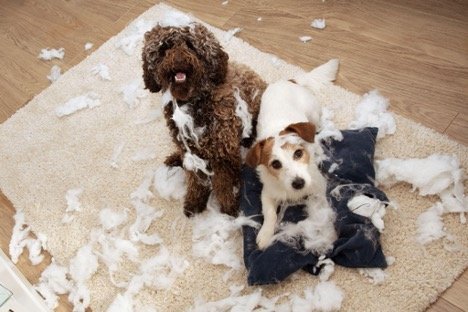Creating a Safe Haven for Your New Puppy
Welcoming a new puppy into your home is a truly joyful experience. Their playful energy and unconditional affection bring endless smiles and laughter. However, with all that excitement, it’s easy to overlook the potential hazards lurking in every corner of your home. This blog post will guide you through the essential steps of puppy-proofing your home, ensuring your furry bundle of joy stays safe, sound, and happy.
Understanding the Need for Puppy-Proofing Your Home
Puppy-proofing is not just a task—it’s an important process for ensuring pet safety. Much like childproofing, it involves making adjustments to your living space to protect your new companion from harm. Puppies are naturally curious and love to explore their surroundings, often getting into mischief along the way. By taking proactive measures, you can prevent accidents and provide a secure environment for your pup’s growth and development.
It’s vital to understand that puppies view the world differently than we do. What looks like a harmless item to us might be a potential chew toy or choking hazard to a puppy. Electrical cords, small objects, and even some plants can pose serious risks. Puppy-proofing involves identifying these dangers and taking steps to eliminate them, creating a space where your puppy can roam and play freely without worry.
Furthermore, puppy-proofing fosters a sense of confidence and peace of mind for pet owners. Knowing that your home is safe for your new pet allows you to focus on building a strong bond and enjoying the precious moments with your puppy. Let’s explore how you can transform each room in your house into a secure haven for your furry friend.
Room by Room Guide to Puppy-Proofing
Living Room
The living room is often the heart of the home, and it’s one of the first places you’ll want to puppy-proof. Start by securing electrical cords using covers or tape to prevent chewing. Keep remote controls, books, and other small items out of reach, as they can become tempting targets for a curious pup.
If you have any plants, make sure they’re non-toxic to dogs. Many common houseplants, such as philodendrons and poinsettias, can be harmful if ingested. Consider placing breakable items on higher shelves to avoid accidental knocks and spills. Lastly, ensure that any recliners or rocking chairs are securely closed when not in use, as they can pose a pinching hazard.
Kitchen
The kitchen is a treasure trove of scents and flavors that puppies find irresistible. To keep your pup safe, install childproof locks on lower cabinets to prevent access to cleaning supplies and food. Secure trash cans with lids to avoid scavenging, and store sharp objects like knives and scissors out of reach.
Be cautious with foods that are toxic to dogs, such as chocolate, grapes, and onions. It’s best to keep them well out of reach or inside locked cabinets. Additionally, consider using baby gates to block off the kitchen when you’re cooking, as hot surfaces and spills can pose a risk to your curious pup.
Bedroom
Your bedroom is a cozy retreat, but it’s important to ensure it’s safe for your puppy too. Keep shoes, clothing, and accessories off the floor to prevent chewing and ingestion. Store medications and personal care items in a secure drawer or cabinet, as these can be toxic if swallowed.
Consider using a dog bed or crate to establish a designated sleeping area for your puppy. This not only provides a safe space but also helps with training and establishes routines. If you have a habit of eating in bed, be sure to clean up any crumbs or leftovers to avoid attracting your pup’s attention.
Bathroom
The bathroom is full of potential hazards for puppies. Keep the toilet lid closed to prevent accidental falls or ingestion of cleaning chemicals. Store personal care products, such as shampoos and lotions, in a high cabinet. Razor blades and other sharp objects should be securely stored to avoid accidents.
Consider using a non-slip mat in the bathtub to prevent your puppy from slipping during bath time. It’s also a good idea to keep the bathroom door closed when not in use, especially if your puppy enjoys exploring the shower curtain or toilet paper roll.
Essential Puppy-Proofing Tools and Products
Puppy-proofing your home requires the right tools and products to effectively safeguard your puppy. One essential item is a sturdy baby gate, which can be used to block off areas of the house that are off-limits. These gates are adjustable and can be easily moved, providing flexibility as your puppy grows.
Cord covers are another valuable tool for protecting electrical wires from curious teeth. These covers conceal cords and prevent your puppy from chewing on potentially dangerous electrical connections. Outlet covers are also useful for blocking access to electrical outlets that could pose a risk.
Consider investing in a pet playpen or exercise pen. These portable enclosures provide a safe and contained space for your puppy to play and explore, both indoors and outdoors. They are especially handy for containing your puppy in a specific area while you’re busy with other tasks.
Common Mistakes to Avoid When Puppy-Proofing
Even with the best intentions, there are common mistakes that new puppy owners often make when puppy-proofing their homes. One such mistake is underestimating the determination of a curious puppy. Puppies can squeeze through small gaps, so ensure that any barriers or gates are securely anchored and without gaps.
Another mistake is overlooking the importance of supervision. While puppy-proofing minimizes risks, constant supervision is essential, especially during the first few weeks. Keep an eye on your puppy’s behavior to identify any potential hazards you may have missed.
Lastly, don’t forget to adjust your puppy-proofing efforts as your puppy grows. What was once out of reach may become accessible to a larger, more agile puppy. Regularly reassess your home and make necessary changes to maintain a safe environment.
Creating a Safe and Welcoming Environment
In conclusion, puppy-proofing your home is a crucial step in ensuring the safety and well-being of your new furry family member. By understanding the need for puppy-proofing, addressing each room in your house, and avoiding common mistakes, you’ll create a secure haven where your puppy can thrive.
Remember, the effort you put into puppy-proofing not only protects your pup but also strengthens the bond you share. A safe and welcoming environment allows your puppy to explore, learn, and grow with confidence. If you have additional puppy-proofing tips or experiences to share, we’d love to hear from you in the comments below. Together, we can create a community that supports and nurtures our beloved pets.











1 thought on “Puppy-proofing Your Home”